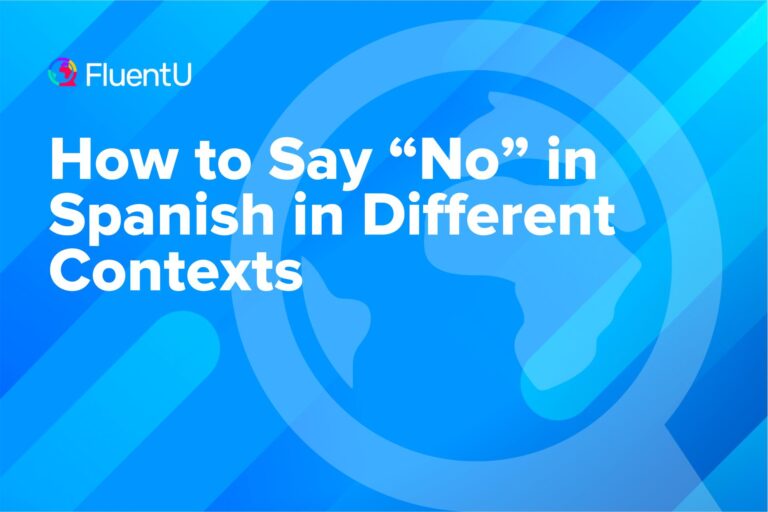Passive Voice in Spanish (Including Examples)

The Spanish passive voice is a type of sentence structure where the subject receives the action instead of doing the action. In a passive-voice sentence, the condition is more important than who performs the verb.
If this sounds a bit confusing, no worries. The Spanish passive voice is much easier than you probably think. So in this post, you’ll learn what the passive voice in Spanish is, how to use it, when to use it (and when not to) and more.
Download: This blog post is available as a convenient and portable PDF that you can take anywhere. Click here to get a copy. (Download)
What is the Passive Voice?
To understand the passive voice, we first need to know the difference between the active and the passive voices.
The active voice (both in Spanish and English) is the most common way we express ourselves. When we say or write a sentence using the active voice, we have a subject that does an action to an object.
Take a look at these two active voice sentences:
Yo escribí estas cartas. (I wrote these letters.)
Mi hermana está cocinando sopa. (My sister is cooking some soup.)
In the passive voice, the sentence has the same nouns and actions, but their roles are different.
See how these sentences are structured slightly different from the first two:
Estas cartas fueron escritas por mí. (These letters were written by me.)
La sopa está siendo cocinada por mi hermana. (The soup is being cooked by my sister.)
The direct objects of the active sentences (estas cartas and sopa) are now the subjects of the passive ones. We’ve also made some verb changes, but you’ll learn more about that in the following section. You can also see this concept in use by native Spanish speakers on the FluentU program.
FluentU takes authentic videos—like music videos, movie trailers, news and inspiring talks—and turns them into personalized language learning lessons.
You can try FluentU for free for 2 weeks. Check out the website or download the iOS app or Android app.
P.S. If you decide to sign up now, you can take advantage of our current sale!

How to Form the Spanish Passive Voice
Spanish passive voice formation is pretty straightforward. The formula is:
Subject + ser + past participle
You may also have an optional by-phrase, which starts with por (for) and is followed by an agent (the person or thing doing the verb’s action).
For example:
Estas cartas fueron escritas por mí.
The only thing that may get you in trouble when learning the passive voice is the change the verb undergoes, but follow these two simple rules and you will get it right every time:
1. “Ser” in the passive voice must be conjugated in the same tense as the main verb in the active sentence
Remember that ser needs to agree in person and number with the subject!
For example:
| Tense | Active Voice | Passive Voice |
|---|---|---|
| Present Simple | Yo como pizza | La pizza es comida por mí |
| Preterite | Yo comí pizza | La pizza fue comida por mí |
| Simple Future | Yo comeré pizza | La pizza será comida por mí |
| Simple Future (Plural) | Yo comeré pizzas | Las pizzas serán comidas por mí |
2. The past participle must agree in gender and number with the subject
For example, if the subject is feminine and singular, it will have the ending -a, while if it’s masculine and plural, it will end in -os:
| Number, Gender | Active Voice | Passive Voice |
|---|---|---|
| Singular, Feminine | Yo como pizza | La pizza es comida por mí |
| Plural, Feminine | Yo como pizzas | Las pizzas son comidas por mí |
| Singular, Masculine | Yo escribo un libro | Un libro es escrito por mí |
| Plural, Masculine | Yo escribo libros | Los libros son escritos por mí |
At the end of the passive sentence you can add a by-phrase introduced by “por.” Remember that if the subject is yo or tú, the agents will be mí and ti.
Yo como pizza. → La pizza es comida por mí.
Tú compraste el teléfono. (You bought the phone.) → El teléfono fue comprado por ti. (The phone was bought by you.)
Mi hermana cocinó sopa. (My sister cooked soup.) → La sopa fue cocinada por mi hermana. (The soup was cooked by my sister.)
There are some situations when we do not have to add a by-phrase, the most common ones being:
| Condition | Spanish Example | English Translation |
|---|---|---|
| When the agent is obvious by the context | El ladrón ha sido detenido (por la policía) | The robber has been caught (by the police) |
| When we do not know who the agent is | Mi coche ha sido robado | My car has been stolen |
| When the agent is not important or non-specific, (i.e. alguien, ellos, la gente, etc.) | La pizza ha sido comida | The pizza has been eaten |
| If you do not want to state it, or want to get away with your wrongdoings | La cerveza ha sido bebida | The beer has been drunk |
When to Use the Spanish Passive Voice
Now that you know how to form the passive voice, you need to learn when to use it, and this is actually the easiest part.
First, you can use it when you want to be formal, both in writing and speaking—for example in technical, academic, legal or journalistic contexts:
Los impuestos han sido subidos una vez más. (Taxes have been raised once again.)
Los ganadores han sido condecorados. (The winners have been given medals.)
El ladrón ha sido enviado a prisión. (The robber has been sent to prison.)
La solución ha sido encontrada por un científico francés. (The solution has been found by a French scientist.)
You can also use the passive voice when the subject of the passive sentence is more important than who did the action:
La verdad fue expuesta.
(The truth was exposed.)
[The truth is more important than the person exposing it.]
El niño fue encontrado.
(The child was found)
[The child being found is more important than the person who found him/her.]
Finally, you can use the passive voice when you deliberately want to omit the agent in a sentence:
La casa ha sido destruida. (The house has been destroyed.)
El niño ha sido adoptado. (The child has been adopted.)
Avoiding the Passive Voice
Since the passive voice is not frequently used and sometimes tends to sound awkward, we Spanish speakers normally resort to other constructions that, while allowing the meaning to be retained, make our lives much easier.
The most important are the following three:
1. The indefinite “they”
If the agent is not important, specified or unknown, using ellos as a subject of an active sentence will do the trick.
In Spanish, you don’t need to say that “Your car has been stolen” (passive) when you can say that “They have stolen your car!” (active).
So we would say:
Mi coche ha sido robado (passive) → Me han robado el coche (active)
Los impuestos han sido subidos (passive) → Han subido los impuestos (active)
2. “Hay que”
If you don’t want to take responsibility for your actions or you need somebody to do something—but you don’t want to tell them directly to do it—use hay que.
This will make the sentence impersonal, and you won’t feel bad afterwards!
La basura debe / tiene que ser tirada. (The garbage must be thrown away) → Hay que tirar la basura (Somebody has to throw away the garbage)
La leche tiene que ser comprada. (The milk has to be bought) → Hay que comprar leche (Someone has to buy milk)
3. “Se” constructions
Finally, we use “se” constructions with non-personal subjects.
While it’s often translated to the passive voice in English, “se” constructions are not considered passive voice in Spanish.
This kind of construction is actually very common in Spanish, and the best part is that you can use it both in formal and informal contexts.
You just need the pronoun “se,” a verb in the third person and a subject.
For example:
Se habla español. (Spanish [is] spoken here.)
Aquí se venden coches. (Cars [are] sold here.)
Se alquila. (For rent.)
Se necesita camarero. (Waiter needed.)
And that is it! If you follow these simple rules, you will have no problem building sentences in the passive voice.
However, remember that we typically don’t use it in everyday situations, so it’s much better to use the active voice or resort to one of the last three tricks above.
After all, why should I say, “The post has been finished” when I could say, “I have finished the post!”?
Download: This blog post is available as a convenient and portable PDF that you can take anywhere. Click here to get a copy. (Download)
And One More Thing…
If you've made it this far that means you probably enjoy learning Spanish with engaging material and will then love FluentU.
Other sites use scripted content. FluentU uses a natural approach that helps you ease into the Spanish language and culture over time. You’ll learn Spanish as it’s actually spoken by real people.
FluentU has a wide variety of videos, as you can see here:

FluentU brings native videos within reach with interactive transcripts. You can tap on any word to look it up instantly. Every definition has examples that have been written to help you understand how the word is used. If you see an interesting word you don’t know, you can add it to a vocab list.

Review a complete interactive transcript under the Dialogue tab, and find words and phrases listed under Vocab.

Learn all the vocabulary in any video with FluentU’s robust learning engine. Swipe left or right to see more examples of the word you’re on.

The best part is that FluentU keeps track of the vocabulary that you’re learning, and gives you extra practice with difficult words. It'll even remind you when it’s time to review what you’ve learned. Every learner has a truly personalized experience, even if they’re learning with the same video.
Start using the FluentU website on your computer or tablet or, better yet, download the FluentU app from the iTunes or Google Play store. Click here to take advantage of our current sale! (Expires at the end of this month.)







